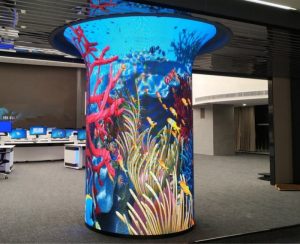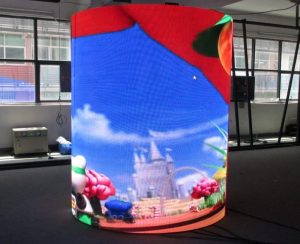The combination of 3D and large screen, in addition to the giant screen of cinema, is more in the field of LED display. In the field of teaching application, intelligent manufacturing, medicine and so on, all highlight the ultimate visual effect brought by the combination of 3D and led.
As a pioneer in the field of 3D display in 2013, we took the lead in introducing 3D display solutions in detail.
Why is the world that people see three-dimensional? Because there is a certain parallax when people observe the scene of an object, the left and right eyes can obtain images of the same object at different angles.
Scientists invented 3D display technology because of their insight into the principle of parallax.
3D display technology is a technology that uses a series of optical methods to produce parallax between the left and right eyes and form 3D stereo effect in the brain.
At present, 3D display is divided into naked eye 3D and non naked eye 3D (spectacle 3D). Generally, naked eye 3D needs special process processing for LED display or production of specific video source, which is an unconventional 3D solution with high price and low cost performance. Today we focus on non naked 3D.
There are three common processing methods for non naked eye 3D display, namely color separation, light separation and time division.
//Color separation: color difference 3D display
The principle of color difference 3D display is to print the pictures taken from two different perspectives in the same picture with two different colors. Through the filtering effect of red and blue stereoscopic glasses, the left and right eyes can get the picture and produce parallax, so as to present 3D stereoscopic effect.
//Optical spectroscopy: polarized 3D display
The principle of optical division method is to filter the light in different vibration directions with the help of polarizer (silicon crystal coating film), and only let the light in the same direction of polarizer pass through to form parallax, so as to achieve 3D stereo effect.
//Time division method: active shutter 3D display
Active shutter 3D display is to improve the frame rate of screen display, divide the picture containing the left and right eye images into two parts according to the frame, and form two consecutive pictures of the left and right eyes. With shutter 3D glasses, the two pictures are respectively transmitted to the left and right eyes to form parallax, so as to achieve 3D vertical effect.
Display example of time division method
The mini optoelectronic 3D solution adopts the active shutter scheme, which multiplies the 3D video source from 60Hz to 120Hz, and then cuts and fuses the video. With the 3D transmitter and 3D glasses, the picture is accurately sent to the left and right eyes, so that the left and right eyes can obtain the image with parallax and form a 3D effect.
At present, mini optoelectronic can realize single channel 3D signal fusion processing and dual channel 3D signal fusion processing.
Next, we will explain the mini optoelectronic single channel and dual channel 3D signal fusion processing scheme respectively
//Single channel signal 3D fusion processing scheme
Single channel signal 3D fusion processing technology is that the 3D device cuts and fuses the signal source containing the left and right eye images, divides the left and right eye images of a frame and outputs them cross;
The scheme uses a mini photoelectric x16-3d device, the input source is connected with a 4K signal with a resolution of 3840 * 1080, and the 3D effect is finally presented with 3D transmitter and 3D glasses.
3D fusion processing scheme of dual signal
Dual signal 3D fusion processing technology is that 3D devices receive two signals at the same time, one for left eye and one for right eye.
The device omits the cutting action, directly fuses the two signals, and outputs the left and right eye pictures alternately.
This scheme can use a mini photoelectric x16-3d device, the input source is connected to two signals of left and right eyes, and the resolution of left and right eyes is 1920 * 1080 respectively. Combined with 3D transmitter and 3D glasses, the 3D effect is finally presented.
3D effect shows strong visual creative ability and diversified details to create a shocking visual impact. People can’t help but immerse themselves in the feast of art.



